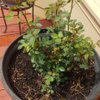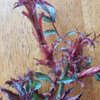Another non general question, this one for Kim
andreark
10 years ago
Related Stories

WORKING WITH PROS10 Questions to Ask Potential Contractors
Ensure the right fit by interviewing general contractors about topics that go beyond the basics
Full Story
REMODELING GUIDESConsidering a Fixer-Upper? 15 Questions to Ask First
Learn about the hidden costs and treasures of older homes to avoid budget surprises and accidentally tossing valuable features
Full Story
WORKING WITH PROS12 Questions Your Interior Designer Should Ask You
The best decorators aren’t dictators — and they’re not mind readers either. To understand your tastes, they need this essential info
Full Story
MOST POPULAR8 Questions to Ask Yourself Before Meeting With Your Designer
Thinking in advance about how you use your space will get your first design consultation off to its best start
Full Story
GREEN BUILDINGConsidering Concrete Floors? 3 Green-Minded Questions to Ask
Learn what’s in your concrete and about sustainability to make a healthy choice for your home and the earth
Full Story
FEEL-GOOD HOMEThe Question That Can Make You Love Your Home More
Change your relationship with your house for the better by focusing on the answer to something designers often ask
Full Story
MOVINGHiring a Home Inspector? Ask These 10 Questions
How to make sure the pro who performs your home inspection is properly qualified and insured, so you can protect your big investment
Full Story
GREEN DECORATING8 Questions to Help You See Through Green Hype
With the ecofriendly bandwagon picking up some dubious passengers, here's how to tell truly green products and services from the imposters
Full Story
REMODELING GUIDES13 Essential Questions to Ask Yourself Before Tackling a Renovation
No one knows you better than yourself, so to get the remodel you truly want, consider these questions first
Full Story
EVENTSDon't Throw Away Another Household Item Before Reading This
Repair Cafe events around the world enlist savvy volunteers to fix broken lamps, bicycles, electronics, small appliances, clothing and more
Full StoryMore Discussions









roseseek
racin_rose
Related Professionals
Baltimore Landscape Architects & Landscape Designers · Brentwood Landscape Architects & Landscape Designers · Havre de Grace Landscape Architects & Landscape Designers · Middle Island Landscape Architects & Landscape Designers · Owings Mills Landscape Architects & Landscape Designers · Port Royal Landscape Architects & Landscape Designers · Edmond Landscape Contractors · Wilmington Landscape Contractors · Framingham Landscape Contractors · Hawaii Landscape Contractors · North Ridgeville Landscape Contractors · San Rafael Landscape Contractors · West Chicago Landscape Contractors · Baileys Crossroads Landscape Contractors · Hueytown Landscape Contractorsroseseek
andrearkOriginal Author
roseseek
nippstress - zone 5 Nebraska
diane_nj 6b/7a
andrearkOriginal Author
kittymoonbeam
racin_rose
racin_rose
roseseek
andrearkOriginal Author
nastarana